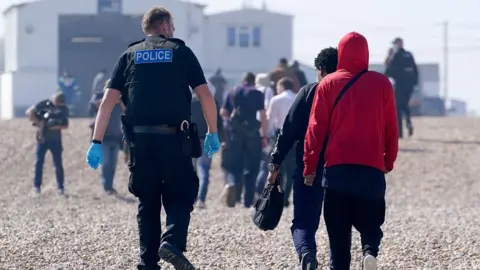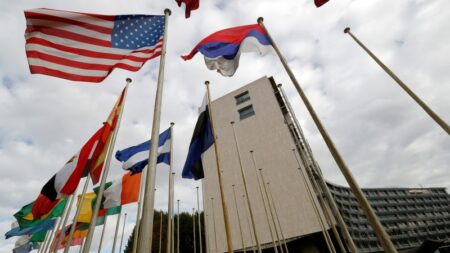The UK government has announced plans to implement artificial intelligence (AI) technology to accurately assess the ages of migrants arriving in the country. This initiative aims specifically to address ongoing concerns regarding adult migrants who falsely claim to be minors. The intent behind this decision stems from a report conducted by the independent immigration inspectorate, which unearthed alarming instances of adult migrants successfully masquerading as children, as well as misclassifications where actual children were erroneously assessed as adults.
In recent developments, it has come to light that a significant number of migrants claiming to be under 18 years old were assessed as adults. Specifically, data reveals that last year, an alarming 56% of individuals asserting they were minors were either classified as adults or later admitted to being over 18. This creates a pressing issue within the asylum process, which affords a more lenient pathway for children seeking to stay in the UK.
The proposed AI technology is derived from existing systems designed for online retailers that sell age-restricted products. Border Security and Asylum Minister Angela Eagle emphasized that this technology is trained on a vast array of facial images, enabling it to produce reasonably accurate age estimates for individuals whose ages are in question. This facial age estimation method is posited to be a “potentially rapid and simple means” for immigration officials when evaluating the ages of those arriving at the border.
Currently, immigration officials and social workers are tasked with the difficult job of assessing the age of migrants who assert they are minors. Both the Home Office and the independent inspectorate have acknowledged that accurately establishing a person’s age is fraught with challenges. David Bolt, the Independent Chief Inspector of Borders and Immigration, expressed concern over the lack of a “foolproof test” for age verification, leading to the likelihood that some assessments will inevitably be incorrect. An analysis of a sample of 100 case files revealed that among 38 individuals initially considered adults, 22 were later determined to be under 18 by local authorities.
The government plans to trial this AI technology with an expected rollout in 2026, with a tender for technology providers slated to launch in August. This aligns with the government’s goal of engaging private sector companies that have invested heavily in similar age-verification technologies used in retail banking and similar sectors.
However, this move has sparked skepticism from various stakeholders, including Enver Solomon, the chief executive of the Refugee Council, who expressed doubts about the reliability of AI tools in age assessment. The inspector’s report raised significant concerns regarding the safety of children being placed with adults, particularly highlighting instances where migrants, assessed as adults, might share accommodations with minors. For instance, the report analyzed the case of a male migrant, who claimed to be 17 years old but was deemed to be around 22 due to noticeable physical characteristics.
The report also raised alarms regarding the process by which some migrants may sign declarations of their age without fully understanding the implications, particularly after enduring arduous journeys. Some immigration officers’ lack of curiosity regarding age assessments that had been overturned was also criticized.
In contrast to previous attempts by the former Conservative government to use biological measures, such as examining bones and teeth for age verification, Labour ministers seem to prefer alternative verification methods that could be readily implemented at border points. Among the eight recommendations from Mr. Bolt’s report that the government has accepted is a commitment to enhance training for immigration officers and improve communication practices regarding age assessments.
In summary, while the UK government appears committed to utilizing AI technology for age verification of migrants, the approach is met with caution and skepticism. Concerns regarding safety, accuracy, and the ethics of using AI for such sensitive assessments highlight the complexities of navigating immigration and asylum processes in the current climate.










